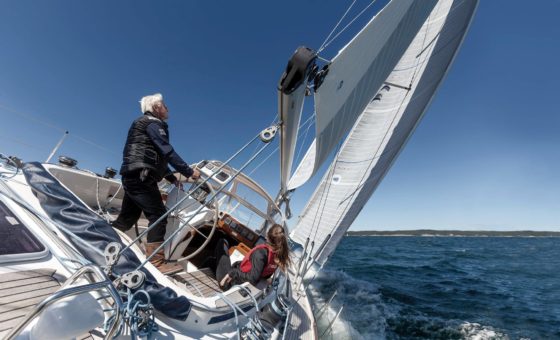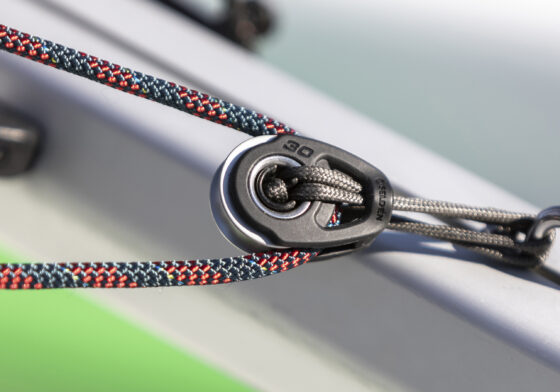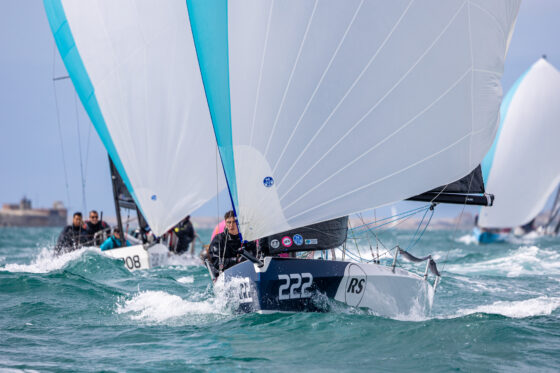
Industry spotlight: will the marine industry weather the economic storms?

Following worrying times for marine firms during the covid lockdowns, many companies now have order books that stretch well into the future, even if supply chain issues continue to be a headache. Yet those who have been in the industry a long time know just how important planning for a downturn is for long-term success.
At the International Multihull Show in the South of France earlier this year the mood across the big French brands was both striking and concerning. They are not counting on the current boom in sales continuing as a long-term trend. Instead, many were already planning for the possibility of more difficult times ahead.
Rising costs of living, spiralling inflation, increasing interest rates and a threat to European gas supplies are all mounting concerns. In July 2022, Financial Times reported German business confidence having fallen to its lowest level in more than two years, “…in the latest sign that Europe’s largest economy is teetering on the brink of recession.”
On a more positive note, the industry arrives at this point at a position of strength. Participation is up enormously, new boats are being cranked out as fast as possible and few are available on the brokerage market. Younger people have also returned to boat ownership, reversing a worrying long-term trend.
In addition, many boatbuilders and manufacturers suggest that while the market recedes back to normality – and some nervousness creeps in due to domestic factors – they could still currently sell more product if supply chain, staffing and raw material supplies allowed.
Leading manufacturer of mast and rigging systems, Seldén, echoes a wide swathe of marine businesses experiencing positive results and bumper order books.
“We have experienced an increase in business across all markets – dinghy, keelboat and yacht – and in aluminium and carbon,” says Sam Vaughan, head of sales at Seldén.

“During the first half of 2022, we posted an increase of over 35 per cent growth with carbon proving particularly exciting and gaining traction. We have supplied Oyster, Nautor Swan, Hallberg-Rassey and many other OEMs with lighter, stiffer carbon spars for cruising boats this year. There is real mix of cruising, and racing interest out there,” Vaughan explains.
While he agrees supply chain issues have had a massive impact industry wide, Vaughan says Seldén has made workarounds with its long-established partners meaning the manufacturer has been able to “weather most storms”.
Vaughan cites staffing as a bigger obstacle. “Staffing has probably been a bigger factor [than supply chain],” Vaughan says. “We are a labour-intensive company and to sustain our own growth we need increased levels of labour and finding this labour is very hard.”
Since the pandemic the marine industry has seen a large number of previously UK-based foreign skilled workers leave Britain. Vaughan says that five years ago, staff supply was not such a critical issue.
“Over recent years, several of our skilled foreign workers left. I think Brexit probably started the wheels in motion and the pandemic accelerated it,” says Vaughan.
Another issue facing marine manufacturing is something Vaughan terms the “work readiness” of entry-level employees. “We accept that mast building isn’t a career choice that many people have when they leave school. But we’re very happy to teach people the skills and we are very keen to employ young workers. The problem is that even finding people that have got any form of relatable skill is incredibly difficult – as is finding people who are work ready. This is an industry where you’ll be at your workbench at 7.30am and that isn’t what some younger employees are ready or willing to do,” Vaughan says.

New routes to market
With areas of consumer spending likely to take a hit if financial pinches begin in earnest, new routes to market and adapting production lines becomes all the more important.
In recent years, boat shares have helped fuel growth as well as prime more customers for future boat ownership. For consumers, boat shares can be a cost-effective way to use a boat and for brokers, the model is a valuable tool to attract and retain new clients. Historically, worries including legal concerns, the possibility of disputes with other partners, or simply the fact a boat without your personal kit on board won’t really feel like yours, have hampered the uptake of this type of ownership.

Beneteau Oceanis 40.1 Image courtesy of Robin Christol
European yacht brokerage company Ancasta has invested a lot of effort and experience into addressing these problems and has seen positive results across its yacht share division covering sail and motor yachts. “Most enquiries tend to be from people who are first-time owners,” says Ancasta Group marketing director Will Blair.
“I think it’s the appeal of low risk and lower commitment, combined with our service package, which people find reassuring if they haven’t had boats before.”
Boat shares provide a cheaper route into boating and once hooked, a growing number of boat share members are opting for full ownership. Blair gives an example of a client who started with a share of a Beneteau Oceanis 38.1, then bought an Oceanis 51.1 in the Mediterranean but held on to the share of the original boat “because he still quite enjoys it”.
He also points to a change in the attitude of clients over the past couple of years whereby the boat share option is proving an essential part of Ancasta’s offer: “When they walk in the door people are no longer saying: ‘I want to buy that boat’. They’re saying, ‘I’m looking to get into boating, what are my options?’”
Brand experience
In many senses, the key thing leisure boat buyers are looking for is a route to new experiences. Brands that understand this, such as Nautor’s Swan and RS Sailing, are outperforming other boatbuilders. The former’s regattas and rendezvous events, for example, are legendary – with buying a Swan the only way to ‘join the club’.

Similarly, much of RS Sailing’s success is community and activity driven. “We need to make sure we create relevant activities for our customers that gets them hooked,” says commercial director Michiel Geerling.
Whether the spike in participation over the past two years – more than 1,000 people took part in the 2022 RS Games – is a temporary blip or a change in longer-term behaviour is still to be seen but Geerling is positive. “If we look at the success of the RS Games, there are fewer travellers from abroad, but the local attendance has improved tremendously,” he says. Although RS Sailing is a boatbuilder, the firm is expanding the range of services it offers. “Whether you buy an RS Tera or an RS21, it’s super important to make sure there are relevant activities,” Geerling emphasises.
The RS21 keelboat class, for instance, has six key events in locations in Croatia and Italy this year. The format is so popular that many sailors who hired a boat for one event go on to buy one of their own. Equally, the programme format is so appealing that many of the professional crew on the Swan 36 racing circuit have an RS21 as their own boat and the two companies now cooperate to ensure their calendars don’t clash.
The industry clearly faces new challenges but businesses are preparing for the future with an encouraging energy and fluidity gained during the boom period.
This article was first published in Marine Industry News‘ print edition, distributed at Southampton International Boat Show 2022, with the title Underpinning the uptick. Words by Rupert Holmes.
